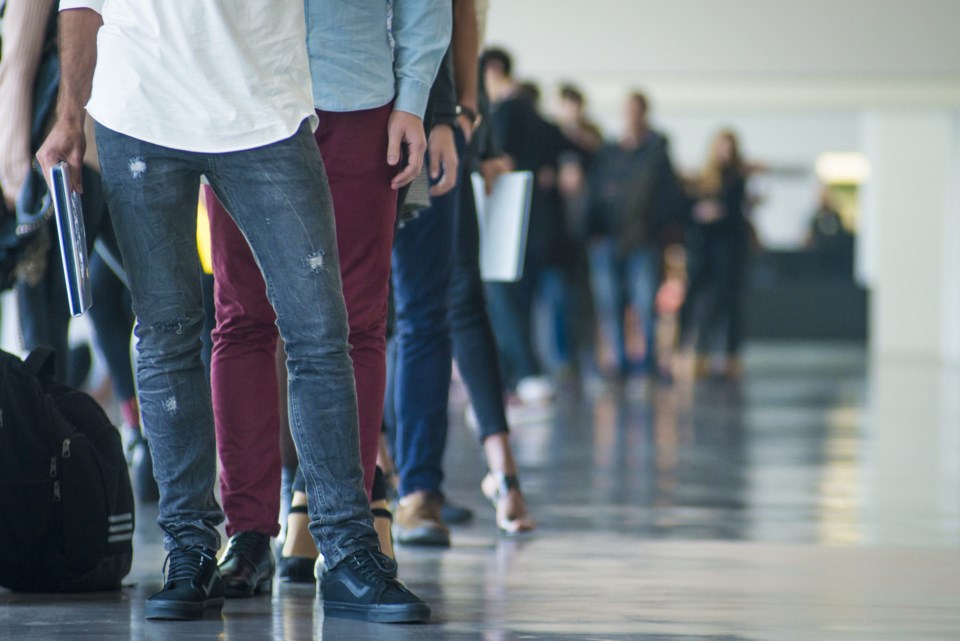According to a report released on Tuesday by NYs Comptroller Thomas P. DiNapoli, New York City continues to lag behind the rest of the state and nation in regaining the jobs lost from the onset of the pandemic.
By March 2022, the city recovered just under 71% of jobs lost, while the rest of New York state has regained 82% of jobs. By April 2022, the United States had regained 95%.
The city’s unemployment rate remains substantially higher than the rest of the state and nation and higher than its pre-pandemic rate. The slow recovery of pandemic job losses has left the city with an unemployment rate of 6.5%, 2.8 points higher than the February 2020 level of 3.7%, while the nation’s unemployment rate is only one-tenth of a point above its February 2020 level of 3.5%.
The remainder of the state reached its February 2020 rate of 4% by October 2021.
“New York City suffered heavy job losses from the shock of the pandemic shutting down many businesses in early 2020, and it has not fully regained these jobs,” DiNapoli said.
“The recovery is also uneven and unequal among the workforce, particularly with demographic groups and lower-income workers. The pandemic intensified pre-existing inequities that left many unable to work. These issues are complex and will not be easily fixed.”
About 36% of unemployed workers living in the city have been seeking work for longer than 27 weeks and are considered long-term unemployed. While the gap in the long-term unemployed share of job seekers between the city and the nation was largest one year after the onset of the pandemic in March 2021 (69% in the city versus 43% in the nation), it is still sizeable two years later (36% in the city versus 24% in the nation).
Over the course of the pandemic, many people also left the workforce. DiNapoli’s report found that some demographic groups rebounded to pre-pandemic levels of labor force participation by 2021, while other groups have not yet fully returned.
Major findings of DiNapoli’s report:
- Female workers were impacted especially hard in 2020, with the unemployment rate increasing by 8.7 points in the city compared to an increase of only 4.7 points in the nation. While men have historically participated at a higher rate in the work force than women, the gap in labor force participation rate between males and females narrowed between 2019 (68.3% vs. 53.5% and 2021 (65.5% vs. 54.5%) as more women sought employment.
- Female and male workers with children each dropped over 1 point in their labor force participation rates in the nation in 2020. Working parents in the city experienced a steeper drop, roughly 6 points for men and 2 points for women. Female workers with children in the city were more likely to seek jobs or remain employed (up 1.7 points to 64%) from 2019 to 2021 than male workers (down 4.2 points to 87.5%).
- The unemployment rate for Black male workers in the city increased in the two years prior to and during the pandemic and continued to rise in 2021 to 14.9%.
- Prior to the pandemic, Hispanic and Asian females had higher unemployment rates than males in the city (5.5% for Hispanic females versus 4.3% for Hispanic males and 1.9% for Asian females versus 1.8% for Asian males). Between 2019 and 2021, Hispanic and Asian men had a much larger rise in unemployment than their female counterparts (7.4 points for Hispanic males versus 4.7 points for Hispanic females and 6.6 points for Asian males versus 6 points for Asian females).
- The number of people with disabilities in the work force jumped to the highest level in a decade, potentially stemming from the shift to remote work. While the share of people with disabilities in the workforce grew by 4.8 points between 2019 and 2021 to reach a participation rate of 17.5%, their unemployment rate rose sharply and is still high at 17% in 2021.
- College-educated individuals fared better during the pandemic and had a smaller increase in unemployment (4 points to reach 6.2% from 2019 to 2021) than those with no college education (7.8 points to reach 12.9%).
- Young workers, age 16 to 24, are the only age group to see their unemployment rate rise in 2021 to 20.9% compared to 20.4% in 2020.
- The labor force participation rate of noncitizen immigrants continued to decline in 2021 to 62.1%, whereas the rate of citizens has almost rebounded to pre-pandemic levels (59.1% compared to 59.6%). Historically, noncitizen immigrants have higher rates of labor force participation, which may be tied to requirements to have employer-sponsored visa requirements to work and reside in the country.
- The city has seen a sharp decline in self-employed individuals as a share of total workers, which dropped 1.4 points to reach 8.1% from 2019 to 2021. This compared to a gain of 2.3 points to reach 10.8% in the rest of the state and 0.5 points to reach 10.4% in the nation.
DiNapoli notes the city and state have taken steps to support employment more broadly and have targeted support at some groups, including those employed by tourism-dependent businesses, young workers and caretakers.
He encouraged city and state officials to look closely at the city’s labor force and examine whether existing policies are reaching and helping struggling communities.




